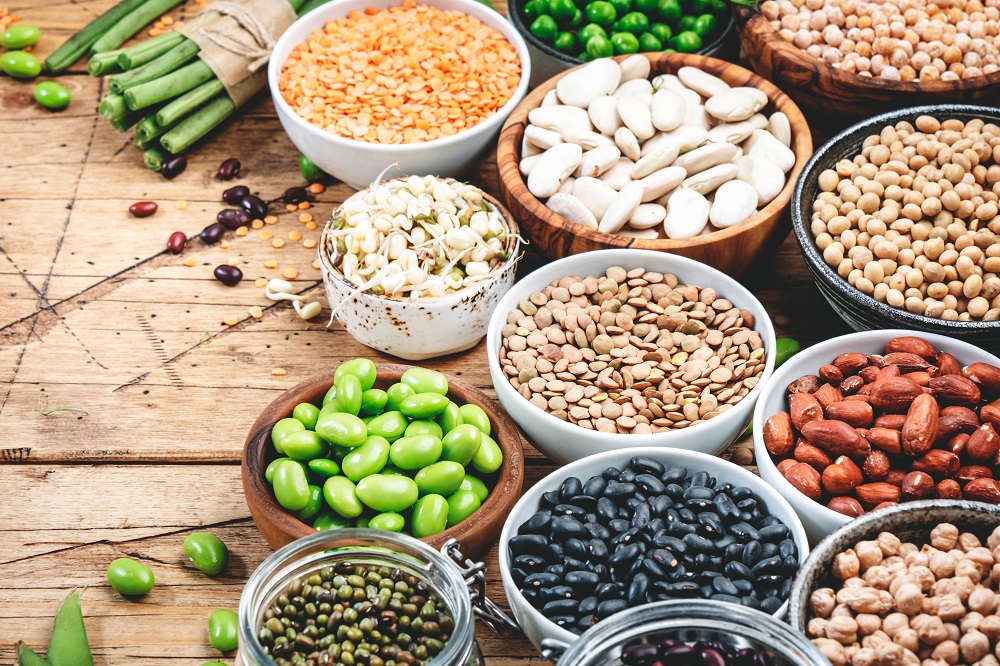
In a sea of health food trends and slogans, it can be difficult to assess what’s best for you and your body. This is particularly true during menopause, when hormonal changes can mean the way you’ve been eating for most of your life suddenly isn’t as effective in giving your body the nourishment and nutritional support as it used to be.
The transition into menopause is a natural biological process that signals the end of a woman’s reproductive years. During this transition, hormonal changes can result in a wide variety of symptoms, all of which can cause disruption to a woman’s health and wellbeing. Hot flushes, mood swings, weight gain and increased risk of chronic illnesses are all common during menopause.
One strategy women can take in order to manage some of these symptoms is assessing the glycemic index (GI) of the foods in their diet. The glycemic index (GI) is a measure of how quickly foods raise blood sugar levels, with foods that have a high GI rapidly digested and absorbed, while foods with a low GI are digested and absorbed more slowly.
When foods have a high GI, this can result in a fast spike in blood sugar levels. This is why women in the midst of menopause are recommended to opt for foods that have a low GI, leading to a slower rise in blood sugar levels and more regulation internally on the back of their meal.
How is GI measured?
The GI of an individual food is measured on a scale from 0 to 100, with pure glucose sitting at a GI of 100. Foods that have a low GI (which is marked as under 55) are viewed as more beneficial for health and ongoing wellbeing, as they provide more sustainable energy sources and help regulate and maintain stable blood sugar levels.
When foods are higher in GI (which is marked as greater than 70), they’re generally considered less healthy. This is because they can wreak havoc on blood sugar levels, causing them to spike suddenly before crashing, which can lead to an ongoing cycle of increased hunger, cravings and mood swings as a lack of blood sugar regulation.
Why does food low in GI help during menopause?
One of the major adjustments during menopause is hormonal changes. As the body decreases its levels of hormonal production, this can result in insulin resistance, meaning the body’s cells are less responsive to insulin. When insulin isn’t able to regulate blood sugar levels as it has to date, this can result in higher blood sugar levels that contribute to weight gain, increased mood swings and a range of other menopause-related symptoms.
By opting for low GI foods, women can support healthy and regulated blood sugar levels throughout each stage of menopause. Avoiding sudden spikes or crashes in blood sugar levels can contribute to stronger physical and emotional health and wellbeing each day, as well as helping to prevent the insulin resistance that can occur with a high GI diet. For women whose weight fluctuates in connection with menopause, a low GI diet can also help with ongoing weight management, reducing the impact of insulin resistance and unstable blood sugar levels.
Low GI diets can help to reduce the risk of chronic diseases like cardiovascular disease. As this is of increasing concern to women as they age, a diet that’s grounded in low GI foods can help to reduce inflammation, improve cholesterol levels and lower the risk of heart disease.
Incorporating low-GI foods into your diet
If you’re looking to build a diet that’s rich in low-GI foods, you can make the most of easy recipes that simplify the process.
We’re big fans of Food52’s Stewy Chickpeas with Tomatoes, Capers and Feta recipe. This recipe provides a hearty way to incorporate low-GI foods into your daily intake without much effort.
By making a few simple swaps, you can alter the GI and make it even easier to whip up for a weeknight dinner, including:
- Swap in canned chickpeas instead of soaking dry chickpeas. You’ll need 2 tins of chickpeas to make the same quantity of chickpeas. Although the GI for canned chickpeas is higher than dried chickpeas which have been soaked overnight, this swap means you can have a low-GI dinner on the table in minutes.
- Swap out crusty bread for a whole-grain sourdough, as this is a lower GI option. Rye sourdough is the lowest-scoring bread on the GI scale at 50.
- We’d also recommend halving the amount of oil, reducing the overall caloric content of the meal without any noticeable impact on the end result.
Other foods that are low in GI include:
- Leafy vegetables like broccoli and spinach
- Legumes, including lentils, chickpeas and kidney beans
- Whole grains, including oats, quinoa and brown rice
- Unsweetened milk and yoghurt
- Nuts and seeds
- Some fruits, such as apples, pears and berries
The glycaemic index (GI) and the glycaemic load (GL)
As well as considering the GI of each food, it’s also important to look at the glycaemic load (GL) in order to truly consider the impact of carbohydrates on the body. The GL takes into account both the type and amount of carbohydrates in a food, looking at how they affect the body.
For some medical practitioners, the GL is a more important metric to consider than the GI. By learning to examine both the GI and GL of your food choices, you can make more informed choices about the types and amounts of carbohydrates you consume.
Support through menopause
A healthy diet is a cornerstone in approaching each stage of menopause – but it’s just one way you can reduce the impact of menopausal symptoms.
To find more support through both natural and hormonal treatments alike, sign up for our newsletter, where you’ll find ongoing resources, tools and insights about how to support your health and wellbeing throughout your menopause journey.